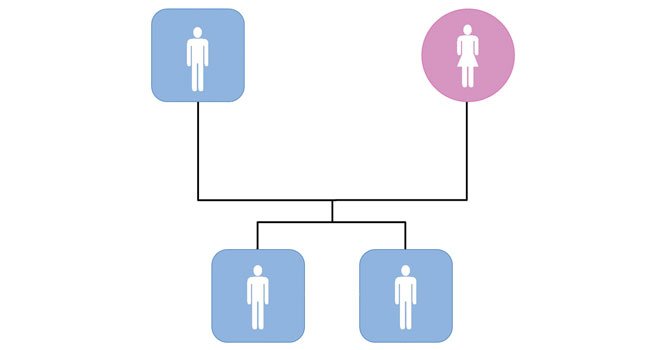
© 2015 50plus Senior News, All rights reserved.
The Search for Our Ancestry: Interpreting DNA Results
Angelo Coniglio | Nov 24, 2015, 6 a.m.

Recently, a reader had these questions about DNA testing.
Q: My father, brother, and I each had our DNA tested by the same venue. My brother and I each were shown to match about 50 percent of our dad’s DNA.
But when my brother and I compared our results, there was only about a 40 percent match. Since we both have the same parents, shouldn’t 100 percent of my DNA match my brother’s?
Also, my results were interpreted by the test to show my ancestry as 75 percent Irish/British, with the remaining significant portion as Southern European.
My brother’s also shows large portions of Irish/British and Southern European; however, a percentage of his ancestry is shown as Middle Eastern.
Again, we have the same parents. How can my brother have ancestry that I do not?
– K. McConti, Amherst, N.Y.
A: Siblings’ DNA will match 100 percent (or nearly so) only for identical twins, who formed from one sperm and one egg, and therefore each have exactly the same half of each parent’s DNA.
You got some DNA from your father that your brother didn’t, and he got some that you didn’t; the same is true of your shares of your mother’s DNA.
On average, non-identical siblings show about a 50 percent match, but the percentage in individual cases may be somewhat higher or lower.
Regarding the ancestry part of your question: Again, you each receive a different “sample” of DNA from your parents. Your brother’s sample may have simply included some DNA from a distant ancestor from the Middle East, while the DNA you inherited did not contain that particular ancestor’s DNA.
Check the DNA test results for your father. Do they show Middle Eastern ancestry? If so, that’s where your brother’s Middle Eastern DNA came from.
If not, if your mother is living, consider having her DNA tested. Her test could show a Middle Eastern connection, but if it doesn’t, remember, as technical as it may be, genealogic DNA analysis is still somewhat prone to error when estimating ancestral ethnicity.
Another common question:
Q: My DNA test results generally show a large number individuals who are idendified as “fifth to eighth cousins” and even as “distant cousins.” Other than identifying these folks as my “DNA relatives,” how does that help my research?
A: You may actually learn more from the more “distant” relatives.
For example, if you think about what your siblings or first cousins might know about your ancestry, they probably have no more insight than you do, or possibly less, if they’re not as “into” genealogy as you are.
Say you have identified all your ancestors, back to and including every one of your great-great-great-grandparents, both males and females (that is, your third great-grandparents). You have a detailed family tree or pedigree showing all their names, birth dates, etc.
Any one of the couples forming that group would be five generations removed from you. A descendant of any set (e.g., one couple) of those third great-grandparents who is also five generations removed from them is your fourth cousin.
Now, let’s say you connect with a “DNA relative” who is in fact your fifth cousin, and he has compiled a family tree back to a common ancestor with you, who is his fourth great-grandfather and also yours.
That common ancestor would be the father, previously unknown to you, of one of your known ancestors, and thus your “tree” would be extended back in time.
|
To my 50Plus
readers: this will be my last genealogy column for
50Plus. I thank the newspaper for allowing me
this forum for the past seven-plus years, and the
readers, who have hopefully enjoyed the columns. |
||
|
Write to me at genealogytips@aol.com or visit his
website, www.bit.ly/AFCGen.
I have written a historical novella, The Lady of the Wheel (La Ruotaia), based on my genealogical research of Sicilian foundlings. For more information, see www.bit.ly/SicilianStory. |
||





